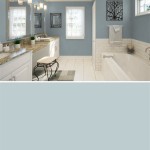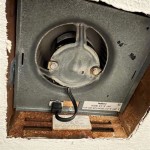What is a 1/4 Bathroom? Understanding its Components and Purpose
The term "1/4 bathroom" might sound unusual, especially when considering the standard definition of a bathroom. It refers to a very specific type of washroom that offers only one essential plumbing fixture: a toilet. Understanding the purpose and composition of a 1/4 bathroom requires contrasting it with more complete bathroom configurations and recognizing the specific situations where it proves most useful. This article will delve into the details of a 1/4 bathroom, differentiating it from half baths, three-quarter baths, and full bathrooms, as well as exploring its practical applications and potential benefits.
The foundation of understanding a 1/4 bathroom lies in recognizing the standard components that define a complete bathroom. A full bathroom typically includes four key plumbing fixtures: a toilet, a sink (or washbasin), a bathtub, and a separate shower stall or a combined bathtub/shower unit. These four elements represent the standard for a complete bathroom, providing facilities for personal hygiene, washing, and waste disposal. Any variations from this standard lead to the fractional bathroom designations.
A half bathroom, sometimes referred to as a powder room, contains two of the four essential fixtures: a toilet and a sink. This arrangement is commonly found on the main floor of a house or in locations where quick access to a toilet and handwashing facility is desired. A three-quarter bathroom, on the other hand, incorporates three out of the four standard fixtures. This typically includes a toilet, a sink, and either a shower stall or a bathtub. The absence of one of these elements differentiates it from a full bathroom.
Therefore, by logical deduction, a 1/4 bathroom, containing only a toilet, represents the most basic form of a washroom. Its primary purpose is solely for waste disposal, lacking any facilities for washing or bathing. While seemingly limited in functionality, its presence can be strategically advantageous in certain circumstances, especially in older buildings or specific commercial settings.
Key Point 1: Distinguishing 1/4 Bathrooms from Other Bathroom Types
The crucial difference between a 1/4 bathroom and other bathroom types rests on the number and type of plumbing fixtures present. As previously explained, a full bathroom encompasses all four standard fixtures, a three-quarter bathroom contains three, and a half bathroom contains two. A 1/4 bathroom, with its single toilet, stands apart as the only type that provides only one of the core components. This stark difference in fixtures dictates its narrow range of functionality.
The distinction is not merely academic; it reflects the intended use and the practical limitations of each type of bathroom. While half bathrooms are popular for guest use due to their convenience for quick handwashing after using the toilet, a 1/4 bathroom only offers the toilet itself. This means that users would need to access a separate sink in another area to wash their hands. Three-quarter bathrooms offer a greater level of hygiene and cleanliness, with either a shower or a bath available for washing the body. Full bathrooms provide the ultimate convenience with all four fixtures in one location, allowing for comprehensive personal hygiene.
In practical terms, the differences affect space requirements, plumbing installation, and overall cost. A full bathroom requires the largest space to accommodate all the fixtures, and it is also the most expensive to install due to the complexity of the plumbing. A half bathroom requires less space and is less expensive, while a three-quarter bathroom falls somewhere in between. A 1/4 bathroom, being the simplest, occupies the least space and is the least expensive to install, but its utility is also the most limited.
Therefore, when considering a 1/4 bathroom, it's crucial to understand that it is not a substitute for a half, three-quarter, or full bathroom. Each type serves a distinct purpose, and the choice depends on the available space, budget, and the specific needs of the users.
Key Point 2: When a 1/4 Bathroom Might Be Appropriate
Despite its limited functionality, specific scenarios exist where a 1/4 bathroom can be a practical solution. These instances often involve older buildings, specific commercial environments, or situations where space is severely restricted. In older buildings, particularly those with limited plumbing infrastructure, adding a full or even a half bathroom might be prohibitively expensive or structurally challenging. In such cases, installing a 1/4 bathroom can provide a basic level of sanitation without requiring extensive renovations.
Consider, for example, an older warehouse or factory that has been converted into office space. If the building previously lacked adequate restroom facilities, adding multiple full bathrooms might involve significant plumbing modifications. Instead, a series of 1/4 bathrooms strategically located throughout the space can provide convenient access to toilets without the need for major infrastructure upgrades. Handwashing stations can then be established elsewhere in the building, perhaps near break rooms or common areas.
Similarly, in certain commercial settings, a 1/4 bathroom might suffice for specific needs. A small retail store, for instance, might only require a single toilet for employees. In such a setting, the primary focus is on providing basic sanitation, and the lack of a sink within the immediate proximity of the toilet is not a significant drawback. The owner can easily provide hand sanitizer or direct employees to a nearby sink in a back room or storage area.
Limited space is another factor that can make a 1/4 bathroom a viable option. In extremely small apartments or tiny homes, every square foot is valuable. If space is so constrained that even a half bathroom is impractical, a 1/4 bathroom can provide a necessary function in the smallest possible footprint. Again, the user would need to rely on a separate sink, perhaps in the kitchen or elsewhere, for handwashing.
In all these cases, the justification for a 1/4 bathroom lies in striking a balance between providing basic sanitation and minimizing cost, space requirements, or structural alterations. It is a pragmatic solution for situations where the limitations of a 1/4 bathroom are outweighed by its practical advantages.
Key Point 3: Considerations for Installing and Maintaining a 1/4 Bathroom
Installing a 1/4 bathroom, while simpler than installing a full bathroom, still requires careful planning and execution. The primary consideration is plumbing. Even though it only involves a toilet, the drain and water supply lines must be properly connected to the building's existing plumbing system. This typically requires hiring a qualified plumber to ensure that the installation complies with local building codes and that there are no leaks or drainage problems.
Ventilation is another important factor. While a 1/4 bathroom is small, adequate ventilation is still necessary to prevent the buildup of odors and moisture. This can be achieved through a window or, more commonly, through an exhaust fan that vents to the outside. The exhaust fan should be properly sized to adequately ventilate the space and should be installed correctly to prevent moisture damage and ensure quiet operation.
The choice of toilet is also significant. Given the limited space, a compact or wall-mounted toilet might be the best option. These types of toilets are designed to save space and can be particularly useful in small 1/4 bathrooms. Water efficiency is another factor to consider. Choosing a low-flow or dual-flush toilet can help conserve water and reduce water bills. Regularly flushing can cause a buildup in the toilet or issues with the pipes, so this should be done cautiously.
Maintaining a 1/4 bathroom is relatively straightforward. Regular cleaning is essential to prevent the buildup of bacteria and odors. The toilet should be cleaned regularly with a suitable toilet cleaner, and the floor should be mopped frequently. It is also important to check for leaks around the toilet and to address any plumbing issues promptly. A small leak can quickly escalate into a larger problem if left unattended.
Finally, consider the aesthetics of the space. Even though it is small and functional, a 1/4 bathroom can still be made visually appealing. A fresh coat of paint, a small mirror, and a few simple decorations can make the space more pleasant to use. Good lighting is also important, as it can make the small space feel brighter and more inviting. Ensure the proper maintenance of the toilet tank and surrounding areas to keep everything in good condition.

What Is A Quarter Bath Learn The Difference Illinado Llc

What Is A 4 Piece Bathroom Real Estate Definition

What Is Full Bath 3 4 1 2 Mean

What Is Full Bath 3 4 1 2 Mean

Vinyl Tiles In Bathroom Need 1 4 Plywood Or Direct On Subfloor Doityourself Com Community Forums

Plank Wall Half Bath Reveal Sypsie Com Laundry Room Remodel Walls

Bathroom Suites For Small Bathrooms Victoriaplum Com

4 People 1 Bathroom How Why It Works For Us Young House Love

Image Result For Small 3 4 Bathroom Layout Floor Plans Shower Room
%20(1).jpg?strip=all)
10 Essential Bathroom Floor Plans







